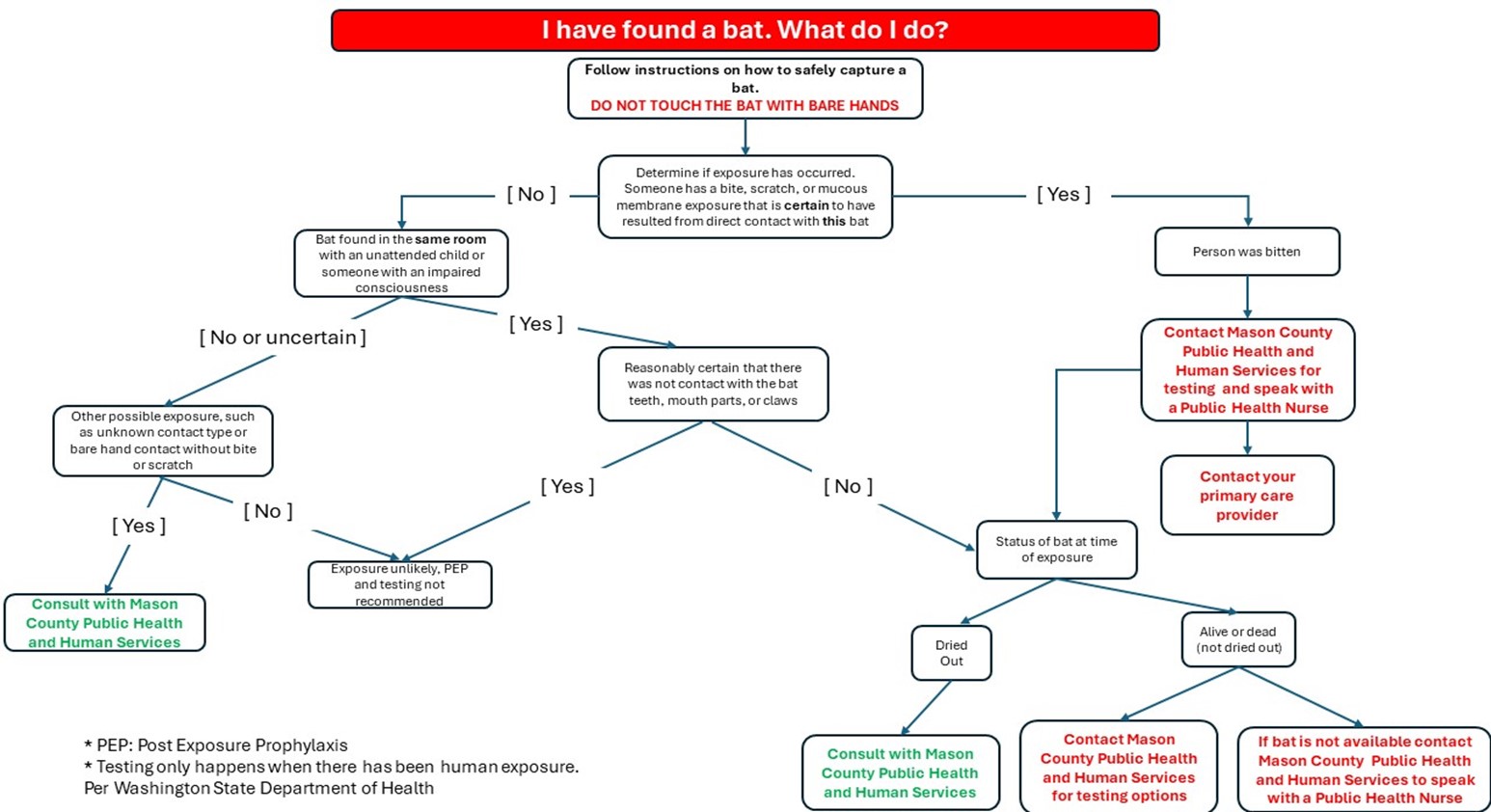Bats
Bats play a beneficial role in the ecosystem here in the Pacific Northwest. Washington State is home to 15 different species of bats. Bats are one of the major predators to night flying insects. Most of the night flying insects in Washington state are not active during the winter. What does this mean for the bats? This means that they will hibernate, migrate, or both.

I have found a bat. What do I do?
DO NOT TOUCH THE BAT
Follow the instructions listed below:
How to safely capture a bat in your home
1. Never handle a bat with bare hands. Wear leather or thick rubber work gloves.
2. If the bat is still flying, try gently striking it with a broom or tennis racket in order to knock it down. You can also try to capture it with a net. The brain needs to be in good condition for testing, so do not smash the bat’s head.
3. Wait until the bat has landed, then place an empty can, small box, or food storage dish over the bat. Slide cardboard under the container to contain the bat.
4. If the bat is dead or injured and not flying, pick it up with a shovel or dustpan and place it in a container.
5. Carefully replace the cardboard with the container’s lid to securely keep the bat contained or tape the cardboard over the top. Make sure the top is firmly attached to the container so the bat will not escape. Punch small air holes in the lid of the container using a nail or small screwdriver. Holes should be 1/8 inch.
6. Place the container in a quiet area away from heavy human or animal activity. Do not refrigerate, freeze, or kill a live bat.
7. Contact Mason County Public Health and Human Services. Monday-Friday (360) 427-9670 Ext 400. You will be asked about contact between the bat and people or pets.
8. Always keep the bat in the container until your local health department decides if the bat needs to be tested for rabies.
9. If the bat needs to be tested for rabies, your local health department will make the necessary arrangements and provide you with the necessary instructions.
10. If local health department personnel determine there is no need to test the bat, then the bat may be carefully released outdoors.
Exposure to a bat includes:
- Direct contact with a bat = bat bite or bat saliva in your eyes, nose, mouth or fresh wound.
- Finding a bat in the same room of a person who might be unaware that a bite or direct contact had occurred. a deeply sleeping person awakens to find a bat in the room or an adult witnesses a bat in the room with a previously unattended child, mentally disabled person, or intoxicated person.

